Most 1969 dimes with “D”, “S”, or no mint marks are worth 10-50 cents in circulated condition, but valuable exceptions exist. The 1969-S proof coins range from $1 to significantly higher for pristine examples. Rare errors dramatically increase value: the 1969-D Missing Clad Layer is highly sought after, while clipped planchets can fetch $30 and off-center strikes $10-$20. A 1969-D dime struck on a penny planchet is particularly valuable. Uncirculated examples graded MS-65 and above command premium prices regardless of mint mark, making condition and error identification crucial for determining true worth.
Most coin collectors walk past 1969 dimes without a second glance, assuming they’re worth just ten cents. While that’s true for the majority, certain mint marks, pristine conditions, and especially striking errors can transform these common dimes into collectibles worth anywhere from a few dollars to several hundred. Understanding what separates a pocket change dime from a valuable specimen requires knowing exactly what to look for on these Roosevelt dimes from over five decades ago.
Understanding 1969 Dime Mint Mark Variations
The United States Mint produced Roosevelt dimes at three facilities in 1969, each leaving its distinctive mark on the coins. The Philadelphia Mint struck dimes with no mint mark, appearing on the obverse just above the date. The Denver Mint added a small “D” in the same location, while the San Francisco Mint marked its special proof coins with an “S.”
Philadelphia produced 145,790,000 dimes in 1969 without any mint mark, making these the most common variety. Denver followed with 563,323,870 dimes bearing the “D” mint mark, representing the highest mintage of that year. San Francisco focused exclusively on proof coins for collectors, striking 2,934,631 pieces with the “S” mint mark. These proof coins were never intended for circulation and came in special collector sets sold directly by the Mint.
To identify your dime’s mint mark, examine the obverse side where Roosevelt’s profile appears. Look just above the date “1969” and slightly to the right. If you see nothing, it’s from Philadelphia. A small “D” indicates Denver, while an “S” means you have a San Francisco proof coin.
Current Market Values by Condition and Mint Mark
The condition of a 1969 dime dramatically affects its value more than the mint mark itself. Circulated examples from Philadelphia and Denver typically trade for 10 to 50 cents, barely above face value. However, uncirculated specimens tell a different story.
1969 No Mint Mark (Philadelphia) Values:
| Grade | Value |
|---|---|
| Good (G-4) | $0.10 |
| Fine (F-12) | $0.10 |
| Extremely Fine (EF-40) | $0.15 |
| About Uncirculated (AU-50) | $0.35 |
| Mint State (MS-60) | $2.50 |
| Mint State (MS-65) | $12.00 |
| Mint State (MS-67) | $28.00 |
1969-D (Denver) Values:
| Grade | Value |
|---|---|
| Good (G-4) | $0.10 |
| Fine (F-12) | $0.10 |
| Extremely Fine (EF-40) | $0.15 |
| About Uncirculated (AU-50) | $0.40 |
| Mint State (MS-60) | $2.00 |
| Mint State (MS-65) | $10.00 |
| Mint State (MS-67) | $25.00 |
The Philadelphia and Denver issues show remarkably similar values across all grades because both were mass-produced for circulation using the same composition: a pure copper core sandwiched between layers of copper-nickel clad totaling 75% copper and 25% nickel.
1969-S (San Francisco Proof) Values:
| Grade | Value |
|---|---|
| Proof-63 | $1.50 |
| Proof-65 | $3.50 |
| Proof-67 | $8.00 |
| Proof-68 | $22.00 |
| Proof-69 | $45.00 |
San Francisco proofs command higher prices because they were specially made for collectors with polished dies and carefully selected planchets. The 1969-S proof dimes feature mirror-like fields and frosted design elements that distinguish them from regular strikes. A 1969-S proof graded Proof-69 by Professional Coin Grading Service sold for $46 at a Heritage Auctions event in 2023, while lower-grade examples regularly trade for $2 to $5 in online marketplaces.
Rare Error Coins That Command Premium Prices
Minting errors transform ordinary 1969 dimes into numismatic treasures. These mistakes occurred during production when something went wrong with the planchet preparation, striking process, or die alignment. Collectors actively seek these errors because they represent unique manufacturing anomalies.
Missing Clad Layer Error:
The most valuable 1969 dime error involves coins struck without one or both of their outer copper-nickel clad layers. This error typically happened when defective planchets entered the coining press. A 1969-D dime missing its clad layer weighs noticeably less than normal (1.75 grams versus the standard 2.27 grams) and appears silver-colored where the pure copper core shows through.
Only a handful of 1969-D missing clad layer dimes have been authenticated. One example in About Uncirculated condition sold privately for $850 in 2022, according to Coin World reports. The rarity stems from the Mint’s quality control typically catching these defective planchets before striking.
Clipped Planchet Errors:
Clipped planchets occur when the blanking press cuts coin blanks from metal strips that weren’t properly aligned. This creates dimes with missing sections, usually along the edge. The clip can be straight, curved, or elliptical depending on how the blank overlapped the previous punch.
A 1969-D dime with a 10% curved clip recently sold for $18 on eBay, while a more dramatic 25% elliptical clip in Mint State-63 fetched $32 at a Stack’s Bowers auction in 2023. The value increases with the clip size and the coin’s overall condition. Circulated clipped planchet dimes typically trade for $8 to $15, while uncirculated examples can reach $25 to $40.
Off-Center Strike Errors:
Off-center strikes happen when the planchet doesn’t sit properly centered between the dies during striking. The resulting coin shows only a partial design, with blank planchet visible where the dies didn’t contact the metal. The value depends on how far off-center the strike landed and whether the date remains visible.
A 1969 dime struck 15% off-center with a full date visible sold for $22 at a Great Collections auction in 2024. More dramatic examples struck 40% to 50% off-center can command $45 to $75 when in Mint State condition. The key factor is date visibility—collectors pay premiums for off-center errors where the year “1969” can still be read clearly.
Wrong Planchet Errors:
Among the most sought-after errors are 1969 dimes struck on planchets intended for other denominations. A 1969-D dime struck on a cent planchet represents an extraordinary mistake. These wrong planchet errors typically weigh 2.5 grams (for zinc cents) or 3.11 grams (for copper cents) instead of the dime’s standard 2.27 grams.
One documented example of a 1969-D dime on a cent planchet, graded Mint State-62 by Numismatic Guaranty Company, appeared in a Heritage Auctions sale with a pre-auction estimate of $500 to $750. The coin’s rarity stems from multiple safeguards that usually prevent wrong planchets from reaching the coining press. Only about a dozen authenticated examples exist across all Roosevelt dime years.
Doubled Die Errors:
Minor doubled die varieties exist for 1969 dimes, though none achieved the dramatic notoriety of doubled dies found in other coin series. These errors occur when the die receives multiple impressions from the hub during manufacturing, slightly offset from each other. The resulting coin shows doubling on letters, numbers, or design elements.
Most 1969 doubled die dimes show subtle doubling on “LIBERTY” or the date. These minor varieties typically add $5 to $15 to the coin’s value in circulated condition, or $20 to $40 for uncirculated examples. Major doubled dies, if discovered, would command significantly higher premiums, but none have been widely recognized or certified as of 2024.
Grading Tips to Determine Your Dime’s Condition
Accurately assessing your 1969 dime’s grade is essential for establishing its value. Professional grading services like PCGS and NGC use the Sheldon Scale from 1 to 70, but collectors can learn to estimate grades using key diagnostic points.
For circulated 1969 dimes, examine Roosevelt’s hair above the ear and the torch flames on the reverse. In Good (G-4) condition, Roosevelt’s hair shows as a flat outline with no interior detail visible. Fine (F-12) coins display some hair detail, though worn flat. Extremely Fine (EF-40) dimes retain most hair detail with slight wear only on the highest points. About Uncirculated (AU-50) coins show just a trace of wear on Roosevelt’s cheekbone and the torch flame tips.
Uncirculated or Mint State dimes show no wear whatsoever. Mint State-60 (MS-60) coins have numerous bag marks and a lackluster appearance from being handled during production and storage. Mint State-65 (MS-65) dimes display fewer marks, with none in prime focal areas like Roosevelt’s cheek, and maintain good luster. Mint State-67 (MS-67) and higher coins show exceptional eye appeal with minimal marks visible even under magnification.
For 1969-S proofs, look for the characteristic mirror-like fields and frosted design elements. Proof coins are graded from Proof-60 to Proof-70. Lower proof grades show hairlines, spots, or haze that detract from the mirror finish. Proof-69 coins appear virtually perfect to the naked eye, while Proof-70 represents absolute perfection with no imperfections visible under 5x magnification.
Consider submitting valuable examples to PCGS or NGC for professional authentication and grading. The service costs $20 to $35 per coin for standard submissions but provides crucial third-party verification that increases buyer confidence and typically enhances resale value. For 1969 dimes worth less than $50 in raw condition, professional grading usually isn’t cost-effective unless you’re building a complete graded set.
Where to Buy and Sell 1969 Dimes
Finding potential valuable 1969 dimes starts with checking pocket change, though your odds of discovering high-grade or error examples this way are slim. Most circulated dimes show significant wear from decades of handling. Better sources include coin shops, estate sales, and inherited collections where coins may have been stored properly for years.
Online marketplaces like eBay host hundreds of 1969 dimes at any given time. Recent completed sales show 1969-D dimes in average circulated condition selling for $0.20 to $0.50, while uncirculated rolls of 50 coins trade for $15 to $30. The 1969-S proofs typically sell for $2 to $5 individually, with original five-coin proof sets from 1969 commanding $8 to $15 depending on condition.
For selling valuable 1969 dimes, particularly errors or high-grade examples, consider auction houses specializing in numismatics. Heritage Auctions, Stack’s Bowers, and Great Collections offer online auction platforms that reach thousands of active collectors. These venues charge seller’s fees ranging from 5% to 15% but provide professional photography, detailed descriptions, and access to serious buyers willing to pay market prices for quality material.
Local coin shops offer immediate payment but typically pay wholesale prices ranging from 50% to 70% of retail value. This option works well for common circulated dimes where convenience outweighs maximizing profit. For rare errors or proof coins worth over $100, the extra effort of using an auction house or specialized online forum usually yields significantly better returns.
Building Your 1969 Dime Collection Strategy
Starting a focused collection of 1969 Roosevelt dimes offers an affordable entry into numismatics while teaching essential coin evaluation skills. A basic three-coin set containing one example from each mint (Philadelphia, Denver, and San Francisco proof) costs approximately $5 to $10 for circulated examples or $40 to $60 for uncirculated quality.
Advanced collectors might pursue a complete grade run, acquiring examples from Good through Mint State-67 for both Philadelphia and Denver issues, plus proof grades for San Francisco coins. This approach requires patience and budget, with a complete grade set potentially costing $200 to $400 depending on the quality of higher-grade specimens chosen.
Error variety collecting presents another engaging path. Searching for clipped planchets, off-center strikes, and other anomalies turns routine coin examination into a treasure hunt. Start by purchasing several rolls of 1969-D dimes from coin dealers or banks (when available), then carefully inspect each coin under good lighting with a magnifying glass. While finding major errors this way is uncommon, minor varieties and interesting die cracks frequently appear.
Document your finds with clear photographs showing both obverse and reverse, and maintain a spreadsheet tracking purchase dates, prices paid, grades, and current estimated values. This organizational system helps you monitor your collection’s growth and identifies gaps worth filling. Consider joining the American Numismatic Association or local coin clubs where experienced collectors share knowledge and trading opportunities that accelerate your learning curve while building relationships in the numismatic community.
You may be interested:
- 1859 Indian Head Penny Coin Value Complete Errors List And No Mint Mark Worth Guide For Collectors
- 1911 V Nickel Coin Value Guide Complete Errors List And No Mint Mark Worth Today
- 1902 Dime Coin Value Complete Errors List With O S And No Mint Mark Worth Guide
- 1788 Quarter Coin Value Complete Guide Errors List And D S P Mint Mark Worth Revealed
- 1776 To 1976 Bicentennial Half Dollar Coin Value Complete Errors List And What Your D S And No Mint Mark Coins Are Actually Worth
- 1990 Penny Coin Value Errors List How D S And No Mint Mark Pennies Are Worth Thousands Of Dollars

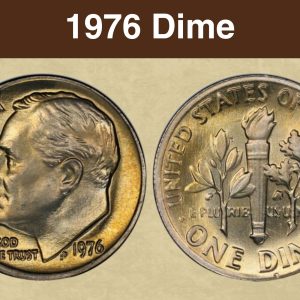
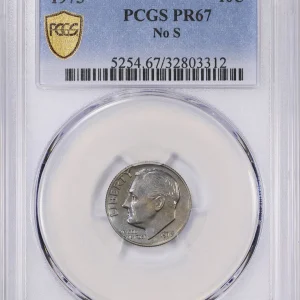
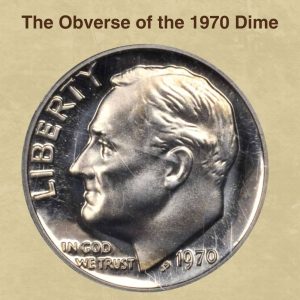
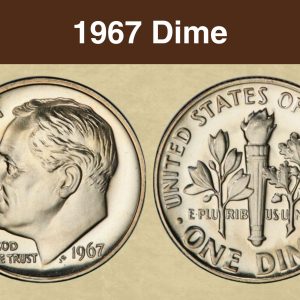
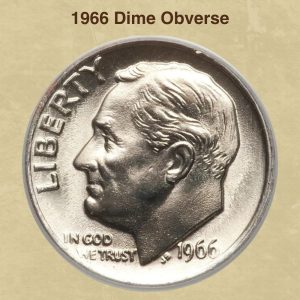
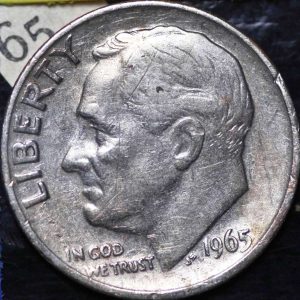
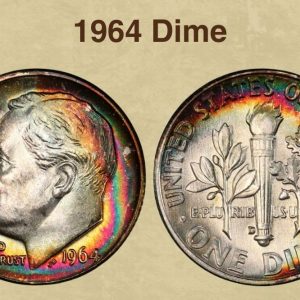
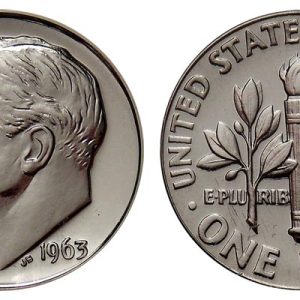
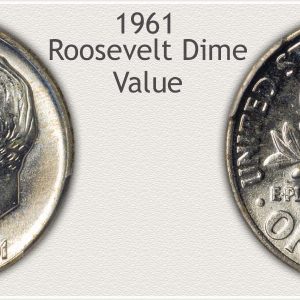
What is the error on the 1969 D dime?
A common 1969-D dime error is the Repunched Mintmark (RPM), where a faint outline of a second “D” appears to the northeast of the main mintmark, potentially worth $150 or more in higher grades. Other valuable errors include those with a split die (a rim-to-rim crack), a missing clad layer, or an off-center strike, all of which add significant value beyond the dime’s standard face value.
How much is a 1969 S dime worth?
A 1969-S dime’s value depends on its condition and type, ranging from about $0.40 to over $300. Most circulated 1969-S dimes are worth about face value or a few cents, but special proof versions can be worth more, especially in high grades or with specific mint errors. Rare errors, like a double strike, or a high-grade proof coin with full bands can be worth several hundred dollars at auction.
What errors to look for on dimes?
When looking for valuable dime errors, check for coins with a double die obverse, where features like the date or motto are doubled, as well as errors in the striking process, such as an off-center strike or a broadstrike where the collar is missing. Other errors include missing or clipped planchets, missing clad layers, or striking through debris like cloth (a strikethrough error ).
What is the error on the 1969 D Roosevelt dime struck on a penny planchet?
This error is a result of the coin being struck on a penny planchet, making it a truly rare find. The coin has been circulated and is ungraded, but it still maintains its value and historical significance. The 10C denomination and Denver mint location add to its collectible appeal.